The Northern Copperhead Bite
The Northern Copperhead: A Fascinating and Dangerous Snake
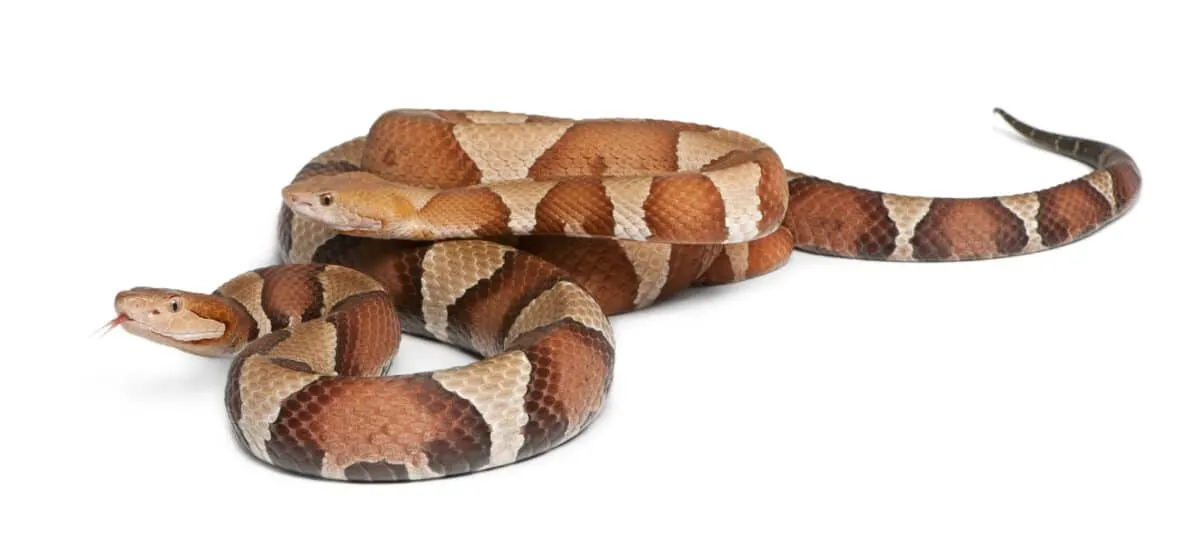
Indigenous to the eastern United States, the Northern Copperhead (Agkistrodon contortrix moccasin) is a venomous serpent. This remarkable creature evokes both admiration for its striking appearance and apprehension due to its lethal nature.
In this blog post, we will explore the world of Northern Copperhead bites, examining their characteristics, habitat, behavior, as well as the impact of their venom on humans and other animals.
Examining the Northern Copperhead Up Close
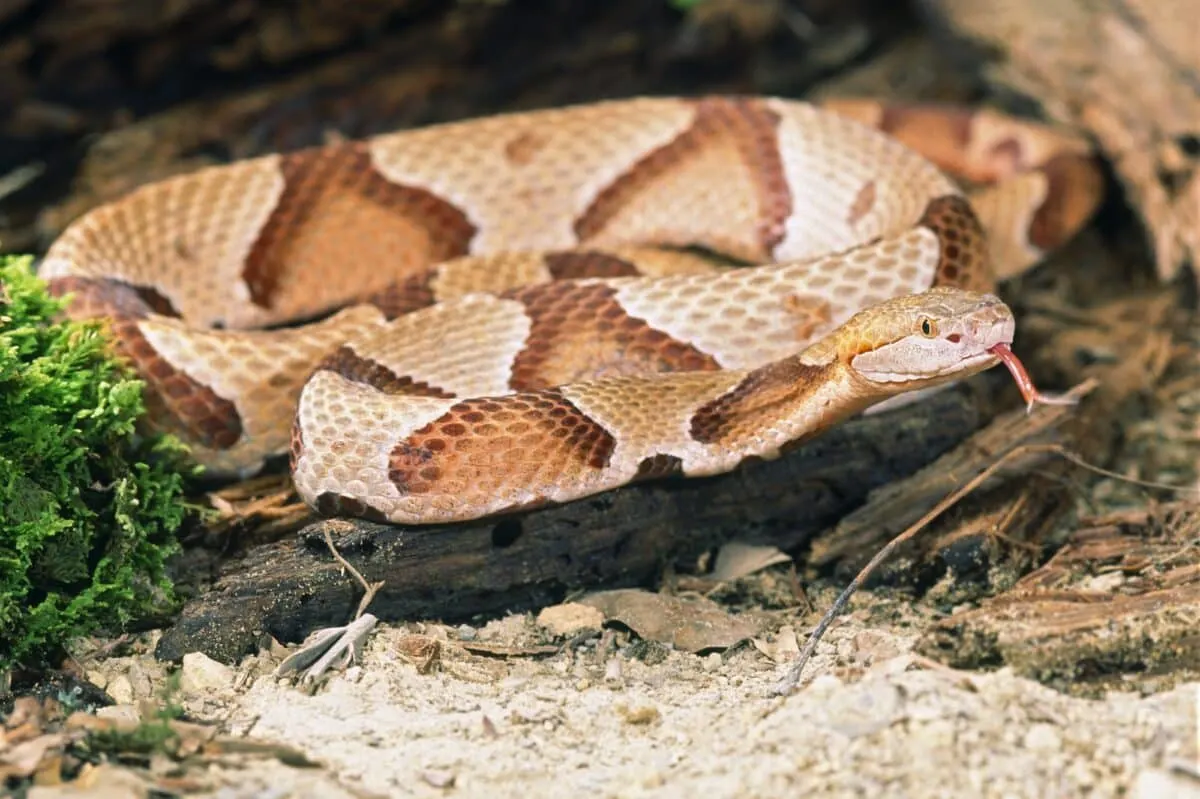
Physical Characteristics
The Northern Copperhead, a captivating venomous snake, stands out due to its distinctive reddish-brown or coppery color. Its name comes from the hourglass-shaped crossbands of various colors and intensities on its body. This eye-catching pattern helps it blend in as an ambush predator.
Natural Habitat
The Northern Copperhead resides in diverse environments across the eastern parts of the United States. It can adapt to different settings like swamps, rocky hillsides, and wooded areas. Understanding their distribution helps identify potential human-snake encounter hotspots and contributes to ecological understanding.
Behavior
Studying the behavior of the Northern Copperhead provides valuable insights for coexisting safely with these dangerous snakes. They exhibit varied behavior based on the season, being more active and visible during warmer months while seeking refuge during winter to conserve energy.
Ecological Significance
Northern Copperheads play a vital role in the ecosystem as both predators and prey. They feed on small mammals, birds, and amphibians, helping regulate their populations. In turn, they serve as food for larger predators such as raptors and carnivorous mammals.
Human Interactions
While Northern Copperheads are venomous, they generally avoid attacking humans. Bites mostly occur when people accidentally step on or disturb them. Understanding their habitats and behavior reduces the chances of encounters and promotes peaceful coexistence.
The Venomous Bite of the Northern Copperhead
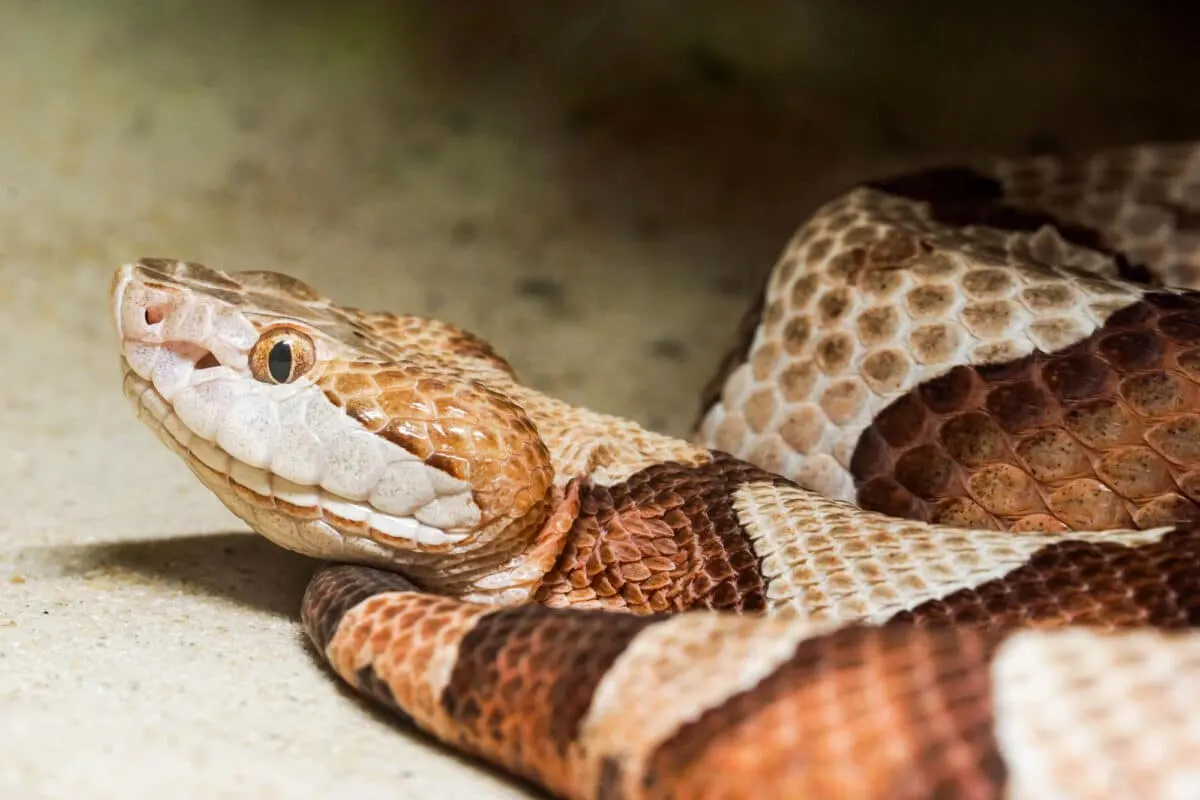
The toxic bite of the Northern Copperhead snake is a fascinating and concerning subject as it plays a vital role in the snake’s defense and hunting techniques. The venom consists of a complex combination of proteins, enzymes, and toxins that immobilize the prey and aid in digestion.
Composition of the Venom
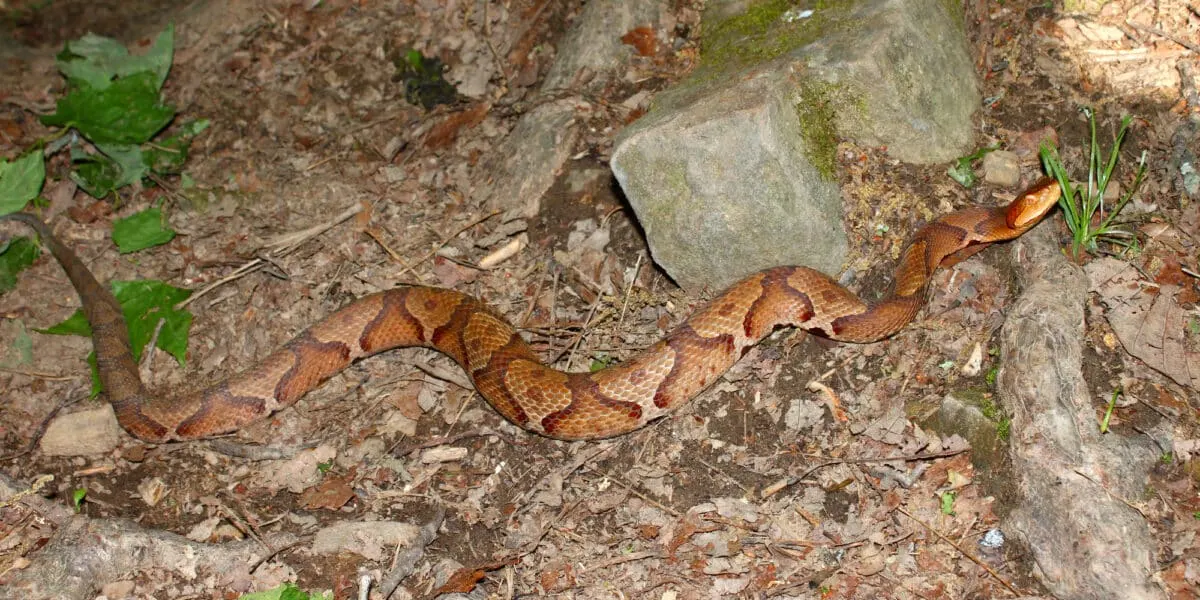
A remarkable aspect of the Northern Copperhead’s venom is its chemical composition. When the snake bites its prey, its fangs inject the venom, instantly rendering the victim unconscious. The venom contains enzymes that break down tissues, making it easier for the snake to consume its prey. Additionally, the venom contains poisons that disrupt the victim’s neurological system, causing paralysis and eventual death. The highly effective venom of the Northern Copperhead ensures swift and successful capture of its prey.
Biting Behavior
While the Northern Copperhead generally does not attack humans, it may do so if it feels threatened or provoked. In defensive situations, the snake assumes a coiled posture, ready to strike if necessary. Sudden movements, unintentionally stepping on the snake, getting too close, or mishandling it can trigger defensive behavior.
Defense Strategies
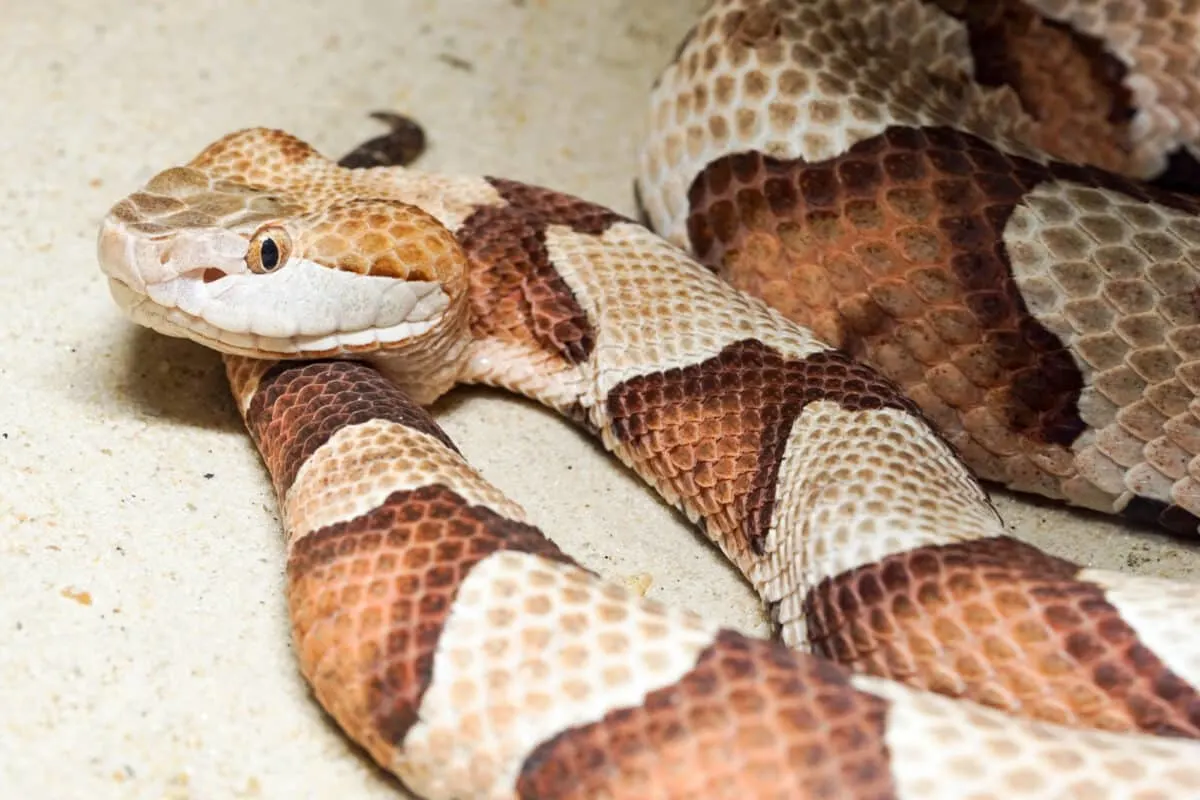
Understanding the defense strategies of the Northern Copperhead is crucial for avoiding potential encounters and reducing the risk of being bitten. Precautions should be taken when exploring areas where these snakes are likely to be found, such as wooded areas or rocky hillsides.
Stick to designated paths, wear sturdy shoes to prevent accidental bites, and avoid reaching into areas where a hidden snake may be present. When encountering a Copperhead, it is important to move away slowly and give it enough space to retreat.
The Impact of a Bite from a Northern Copperhead Snake
The bite of a Northern Copperhead snake can have significant effects on those who are bitten due to the venom’s complex mixture of proteins and poisons used for paralyzing prey. The severity of symptoms resulting from the bite can be influenced by factors such as the amount of venom injected, the site of the bite, the individual’s general health, and their age.
Signs and Symptoms
Bite victims may experience various symptoms ranging from mild localized effects like pain, swelling, and bruising to more serious systemic reactions. The venom’s enzymes can cause tissue destruction and substantial swelling, which can be especially concerning if the bite occurs in sensitive areas or limbs. In cases where a higher amount of venom is injected, systemic consequences may include nausea, vomiting, weakness, and difficulty breathing.
Medical Treatment
Seeking immediate medical attention is crucial when dealing with a bite from a Northern Copperhead snake. Timely medical care significantly improves the victim’s prognosis. Before seeking medical help, it is important to follow essential first-aid steps to minimize the spread of venom and its complications. Immobilizing the injured limb and keeping it at or slightly below heart level can slow down the venom’s circulation. However, it is important to avoid using tourniquets or attempting to extract the venom orally, as these actions can worsen the condition.
Once at a hospital, healthcare professionals may administer antivenom to reduce the venom’s effects. The timing of administering antivenom is critical as it can mitigate symptom severity and prevent further harm from the venom. In severe cases, supportive care such as pain management and assistance with breathing may be provided.
Recovery
Recovering from a Northern Copperhead snake bite, especially if the envenomation was severe, can be challenging. Some victims may require ongoing medical treatment and monitoring to ensure a complete and safe recovery. Regular follow-up medical examinations are essential to assess any potential long-term consequences and address any emerging issues.
Promoting Coexistence and Prevention
Living alongside the Northern Copperhead, a venomous snake, requires education and awareness to minimize interactions between humans and snakes. Implementing effective strategies is crucial to ensure the safety of both people and snakes.
Managing Habitats
Proper habitat management reduces human-snake encounters. Regular maintenance of yards and outdoor areas discourages snakes from seeking shelter. Clearing trash, tall grass, and wood piles prevents snakes, including the Northern Copperhead, from hiding. Repairing fences and buildings helps keep snakes away from human-populated areas.
Waste Disposal
Appropriate waste disposal is vital for coexistence. Removing potential food sources, such as rodents attracted to trash, deters snakes from entering residential areas. Encouraging ethical waste management practices within communities significantly decreases the chances of attracting snakes.
Increasing Awareness
Raising awareness within communities is essential for safety and understanding. Informing locals about the presence of Northern Copperheads and educating them on appropriate actions when encountering a snake can be highly beneficial. Teaching people how to identify dangerous snakes from harmless ones is important in making informed choices.
Campaigns and Education
Engaging in campaigns and educational initiatives plays a vital role in fostering respectful coexistence. These efforts dispel myths about the Northern Copperhead and other dangerous animals. Emphasizing the ecological importance of snakes as pest predators leads to better understanding and acceptance within communities.
Available Resources for Snake Safety and Bite Prevention
To ensure individuals respond appropriately when encountering snakes, it is crucial to have easily accessible resources that provide information on snake safety and bite prevention. Equipping local communities with knowledge on how to avoid snake encounters and respond effectively in the event of a snakebite can be life-saving and help prevent unnecessary fear.
The Bottom Line
Native to the eastern United States, the Northern Copperhead (Agkistrodon contortrix moccasin) is a venomous snake with a reddish-brown or coppery color and distinctive hourglass-shaped crossbands. The severity of symptoms from its bite depends on factors such as venom quantity, bite location, general health, and age, ranging from mild local effects to serious systemic reactions. Seeking prompt medical treatment after a bite significantly improves prognosis. To reduce encounters with snakes in their habitats, it is advisable to stick to approved pathways, wear sturdy shoes, avoid reaching into potential hiding spots, and move away from them cautiously.
The Northern Copperhead bite serves as a reminder of the delicate balance between humans and animals. By understanding their behavior, venom, and role in the ecosystem, we can foster respect for this snake’s intrinsic value in the natural world. Ensuring safety for both people and Northern Copperheads requires responsible coexistence and preventive measures. We can appreciate the beauty of these creatures while minimizing potential risks. Education, awareness, and respecting their natural habitats are key to promoting harmony in our shared world.